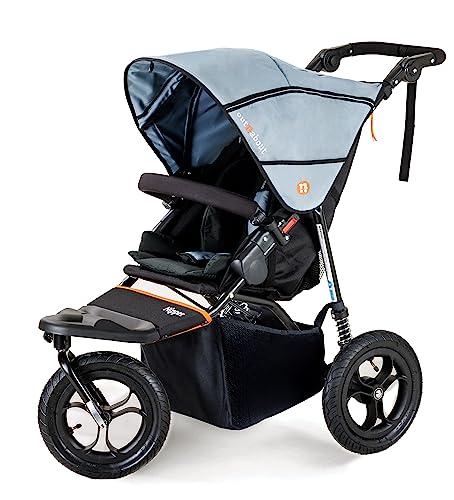The Comprehensive Guide to Choosing the Right Pram for Newborns
The arrival of a newborn brings both immense pleasure and a selection of choices that moms and dads need to navigate. One of the crucial purchases is choosing the best pram, which not only makes sure the baby's security but also supplies benefit for moms and dads. This guide aims to provide an extensive look into picking the proper pram for newborns, discussing various types, features, safety considerations, and maintenance tips.
Comprehending the Types of Prams
Prams vary widely in design and performance, which can be frustrating for brand-new moms and dads. Here's a breakdown of the most common kinds of prams available in the market:
| Type of Pram | Description | Pros | Cons |
|---|---|---|---|
| Conventional Prams | Designed for infants, these prams normally have a deep bassinet. | Comfortable for newborns, Safe for sleeping. | Bulky and heavy, Hard to steer in tight spaces. |
| Travel Systems | A combination of an automobile seat and a stroller, permitting easy shift between automobile and stroller. | Flexible and practical, Cost-effective. | May be much heavier than standalone strollers, Not all parts appropriate for newborns. |
| Lightweight Strollers | Compact and simple to navigate, these are ideal for moms and dads on the go. | Portable and simple to utilize, Generally more inexpensive. | Less cushioning, May not recline completely for newborns. |
| Convertible Strollers | Strollers that can adapt from a carrycot for newborns to a young child stroller. | Multi-functional and long-lasting, Adjustable configurations. | Can be pricey, May need more maintenance. |
| All-Terrain Strollers | Built for rough terrains, these strollers normally include bigger wheels. | Long lasting for outside use, Stable on numerous surfaces. | Much heavier and bulkier, Can be hard to guide indoors. |
Key Features to Consider
When selecting a pram for newborns, several features can significantly affect functionality and safety. Here are vital features to remember:
- Safety Harnesses: Look for a pram that includes a five-point safety harness to make sure the baby stays secure while in transit.
- Reclining Seat: A fully reclining seat permits newborns to lie flat, which is essential for their spine and breathing health.
- Suspension System: A good suspension system supplies a smoother trip, necessary for the fragile bodies of newborns.
- Brake System: Ensure the pram has a trusted brake system to prevent mishaps. www.pushchairsandprams.uk or foot brakes can be efficient choices.
- Storage Space: Consider a pram with adequate storage area for diaper bags, shopping, or other fundamentals.
- Weight and Foldability: Choosing a light-weight alternative that folds quickly is vital for benefit, especially for mass transit.
Safety Considerations
Focusing on security is critical when it concerns prams for newborns. Here are essential safety suggestions to make sure the well-being of your baby:
- Check for Stability: Make sure the pram remains stable when fixed. A large base can supply increased stability.
- Prevent Overloading: Only place items suggested by the manufacturer in the storage basket; excess weight can result in tipping.
- Regular Maintenance: Inspect the wheels, brakes, and harness systems consistently to ensure they work appropriately.
- Buckle Up: Always utilize the security harness, even for fast journeys, to avoid the baby from slipping or falling out.
- Enjoy for Age Recommendations: Follow the manufacturer's standards concerning weight limitations and age suggestions for security.
Maintenance Tips
Taking care of a pram ensures its durability and safety for your newborn. Here are important maintenance suggestions:
- Regular Cleaning: Wipe down the pram frame and wash fabrics according to producer guidelines to keep it hygienic.
- Check the Wheels: Check wheels for damage and tidy them regularly to prevent blocked motion.
- Examine Folding Mechanism: Ensure the folding system runs efficiently without sticking or jamming.
- Lubricate Moving Parts: Apply the appropriate lubricant to moving parts to make sure quiet and smooth operation.
- Shop Properly: When not in use, store the pram in a dry area to avoid rust and protect material integrity.
Often Asked Questions (FAQs)
1. The length of time can a baby remain in a pram?
For newborns, it is generally recommended to restrict uninterrupted time in a pram to about 1-2 hours to prevent problems with advancement and circulation.
2. Which pram is best for a newborn?
The very best pram for a newborn is one that offers a totally flat recline, has a great security harness, and meets current security requirements. Lots of moms and dads choose travel systems for their versatility.
3. Can I use a stroller without a safety seat for a newborn?
It's recommended to utilize a stroller with a flat or near-flat recline for newborns. Some strollers are just ideal from six months and up, so check the maker's guidance.
4. When should I change from a pram to a stroller?
You can move from a pram to a stroller when your baby can stay up separately, generally around 6 months, however this can vary. It's constantly best to speak with the individual pram or stroller standards.
5. What is the very best method to clean my pram?
Always describe the maker's directions, but generally, you can clean fabrics with mild soap and water and wipe down hard surfaces with disinfectant wipes.
Selecting the best pram for a newborn is a considerable decision that affects both the baby's comfort and the parent's lifestyle. By comprehending the kinds of prams available, key functions to consider, security strategies, and upkeep ideas, parents can make educated choices that boost their family's movement and ensure the safety of their children. Investing time in research study now pays off in the long run for enjoyable getaways and treasured memories.

